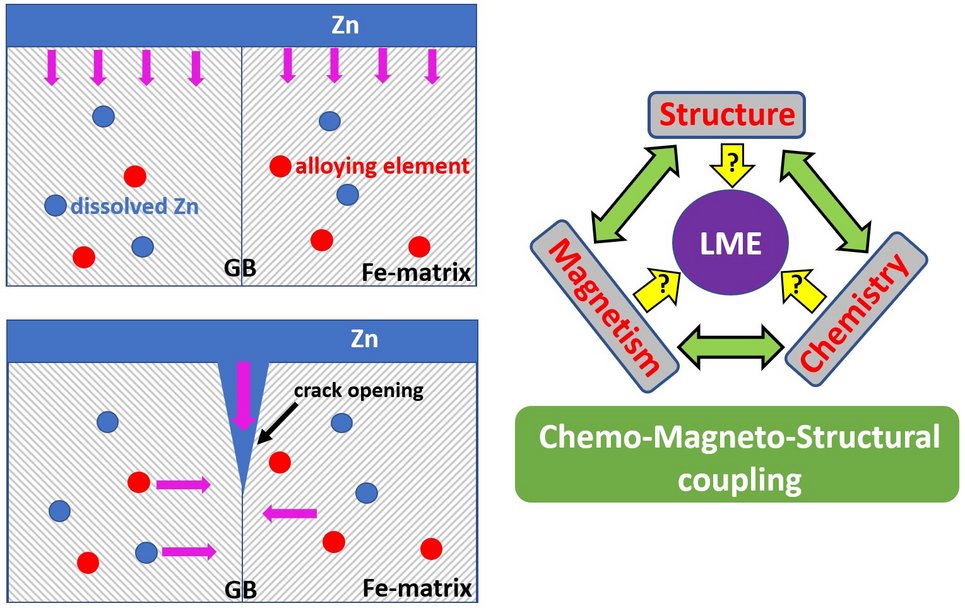Zinc Induced Liquid Metal Embrittlement in Advanced High-Strength Steels
Medium and high-Mn steels constitute an important class in the development of advanced high strength steels (AHSS) for the automotive industry. It was observed that welding of Zn coated AHSS steel can induce liquid metal embrittlement (LME). In this project we will use ab initio methods to reveal the interplay between structure, chemistry, magnetism and decohesion in grain boundaries (GB). The primary focus will be to identifying key mechanisms for LME in order to systematically improve resistance of AHSS to this effect.

Liquid metal embrittlement is a phenomenon that reduces the elongation to failure of an otherwise ductile metal due to the local formation of liquid metals. The steel grades that are used for the body-in-white in automotive industry are commonly Zn coated to protect against corrosion. Welding of Zn actively coated AHSS steel sheets and parts, however, can induce LME. Therefore, a central aspect of this project is to investigate the segregation and percolation behavior of Zn to and along grain boundaries. Further, in order to investigate chemical trends for decohesion, the defect energies are considered as a function of the chemical potential of the solute. As a first step towards understanding LME, we demonstrated that first-principles methods can capture the most relevant mechanisms of LME in bcc Fe grain boundaries [1].
Compared to the established steel grades, medium and high-Mn AHSS contain a significant amount of austenite, which could be a central reason for a severe LME observed in these steel grades. To explore this assumption, we systematically investigate the role of austenite for LME in Mn-containing high-strength steels. The transformation from austenite to ferrite is a temperature driven process, hence we apply the two-optimized references thermodynamic integration using Langevin dynamics (TOR-TILD) to simulate premelting [2].
The consideration of magnetic disorder is most challenging in this context, but particularly relevant for the austenitic phase, which is paramagnetic in the relevant temperature regime. To determine relaxation forces in this case, we make use of the spin space averaging (SSA) technique developed in the Computational Phase Studies group [3]. The project also benefits from the application of the integrated development environment pyiron (http://pyiron.org) [4], which serves as a platform for job submissions, data evaluation with complex simulation protocols and data management.
